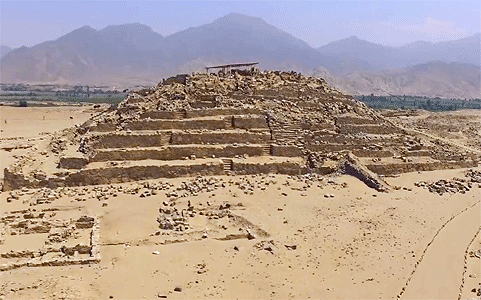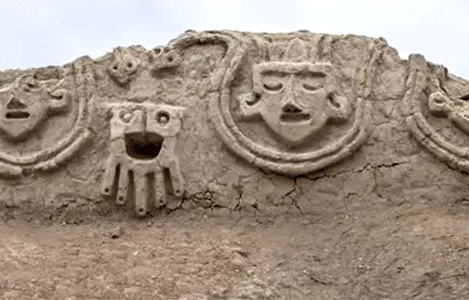
Caral-Supe


Norte Chico Civilization, occupied between 2600 B.C.E. and 2000 B.C.E.; located 200 km north of Lima, in the Supe Valley, near Supe, Barranca province, Peru; Caral pre-dates the invention of ceramic pottery by six centuries, and may be one of the oldest centers of civilization in the Americas, dating approximately 4000 years before the Incan Empire reached its power—"America's mother city" The pyramids of Caral may be older than those in Egypt. Caral remained hidden under sand dunes until discovery by Ruth Shady in 1996. The city covered 1500 acres, had a population of thousands, with six pyramids, sunken circular courtyards, mud brick platform mounds and monumental stone architecture, and remained a vital war-free zone for 1000 years. The people grew cotton in the river valley, and innovated the weaving of fish nets, which they traded for sea food from the coastal tribes, who harvested the rich Humbolt Current upwelling. The Carolinas are the genetic ancestors of people all over South America. Caral is a UNESCO World Heritage Site since 2009.
Elevation is 355 meters (1164 feet) above sea level.
Materials: stone , earth, and fiber.
Data for CG model:
1. Plan with topography from Shady Solis et al., 2001
2. Shady Solis, Ruth; Haas, Jonathan, Creamer, Winifred,200: Dating Caral, a Preceramic Site in the Supe Valley on the Central Coast of Peru; Science 27 Apr 2001: Vol. 292, Issue 5517, pp. 723-726
3. Shady Solis, Ruth, 2006; America's First City? The Case of Late Archaic Caral, from Andean Archaeology III, North and South, Isbell, W.; Silverman, H (Eds.),
( https://www.springer.com/cda/content/document/cda.../9780387289397-c2-4..pdf ).
4. Solis, Ruth Shady, 2007. The social and cultural values of Caral-Supe, the oldest civilization of Peru and the Americas, and their role in integrated sustainable development, Biblioteca Nacional del Peru, No. 2008-02193, Lima, Peru.
5. Sandoval, J., Salazar-Granara, A., Acosta, O. et al. Tracing the genomic ancestry of Peruvians reveals a major legacy of pre-Columbian ancestors. J Hum Genet 58, 627–634 (2013). https://doi.org/10.1038/jhg.2013.73








